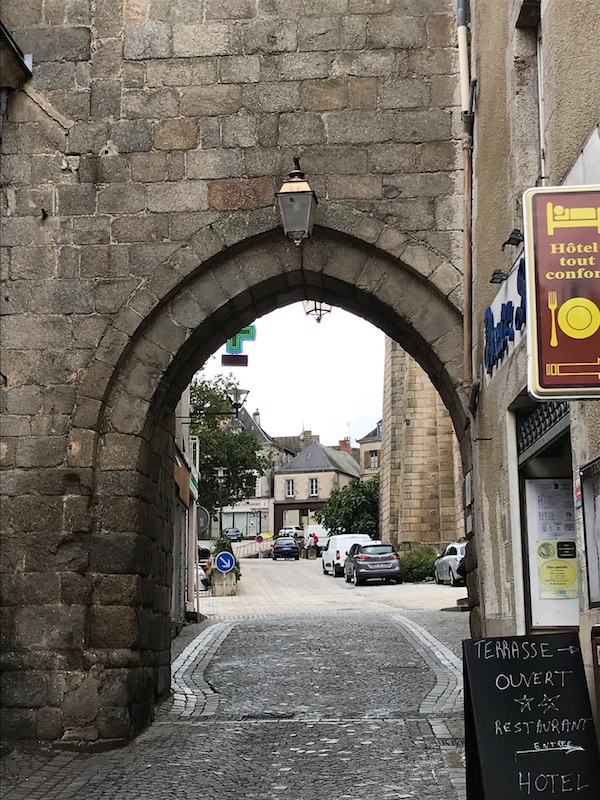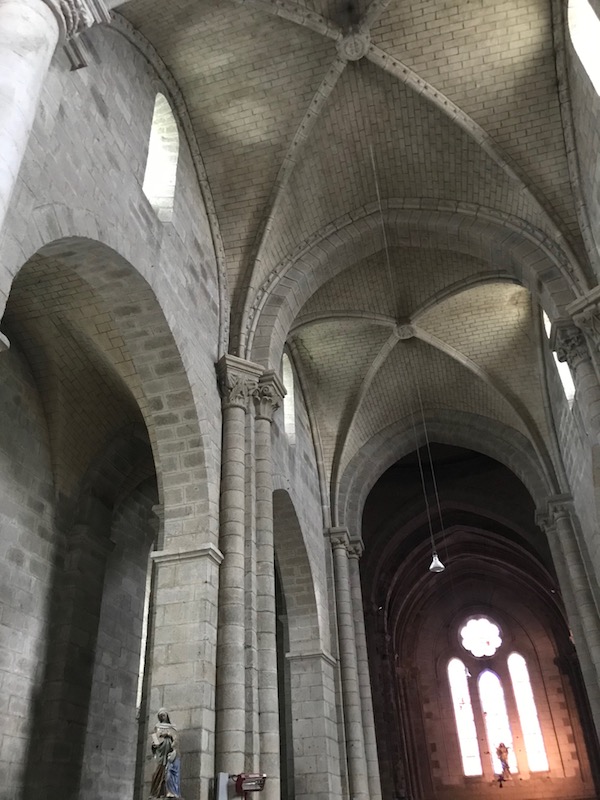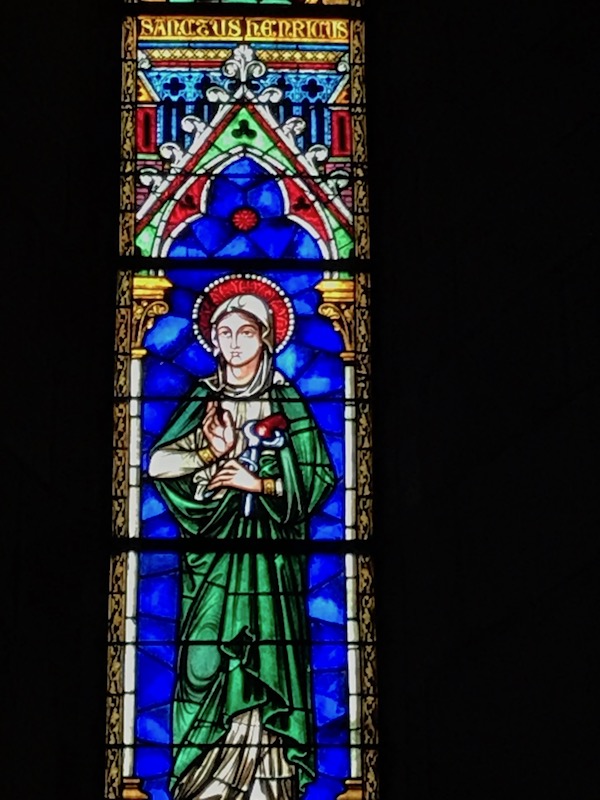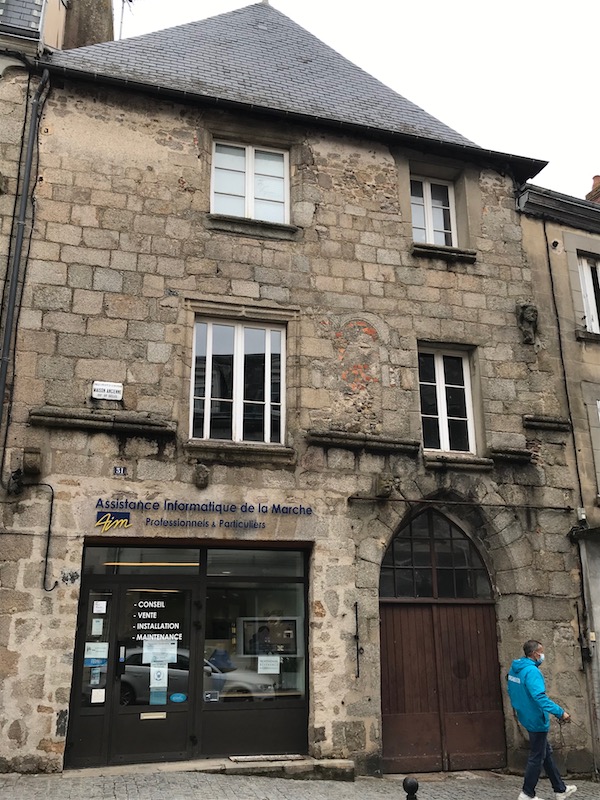Our Blog - La Souterraine, France
Just 4 kilometers east of the current town of La Souterraine, at a place called Bridiers, was a small Roman settlement. Remains discovered in 2019 reveal that the human occupation at the site dates back to the 4th century. Around 1017, Géraud, count of Crozan, gave the Villa Sosterranea to the Saint-Martial Abbey of Limoges. Following this donation, the construction of the church began in 1019, which, begun in Romanesque style, will be completed in 1220 in Gothic style. The city is gradually surrounded by ditches and ramparts up until the 16th century. Only two gates into the old walls remain: Porte Saint-Jean and Porte du Puycharraud.
This is the 13th-century Porte Saint-Jean, which we drove through to find a parking space near the church. It served as a prison until 1860.


The view from the city is pretty plain compared to some of the detail seen from the exterior. Over the door is a small niche with a statue of Saint-Jean.


Like many medieval villages, the church is the heart of the village. Here, the church is the Église Notre-Dame, sometimes call the Église de l'Assomption de la Vierge. Started in the 11th century, the construction lasted until the 13th century. The crypt was done first, taking 5 years to complete. The nave came next, from 1070-1150, and then the transept and bell tower from 1195-1233. The delay in construction was due to insufficient resources and numerous revolts between inhabitants and religious. The church therefore mixes different styles: Romanesque (at the level of the first two bays of the nave) and Gothic (transept, choir, bell tower and the last three bays of the nave). There was work going on, so a good section of the church was under scaffolding. But you can see the curved detail over the main door and the small statue over the side door.



The interior is pretty plain, but you an see the Gothic and Romanesque features. It had quite a few very nice stained-glass windows although I am not sure how old they are.






There were several old houses dating from the 13th to 15th centuries around the village, including this one.
